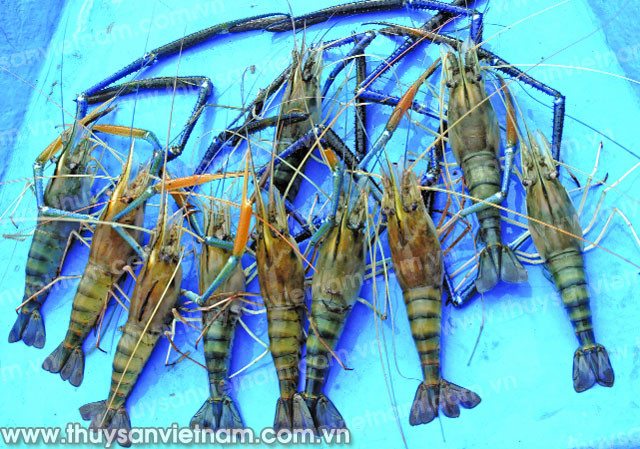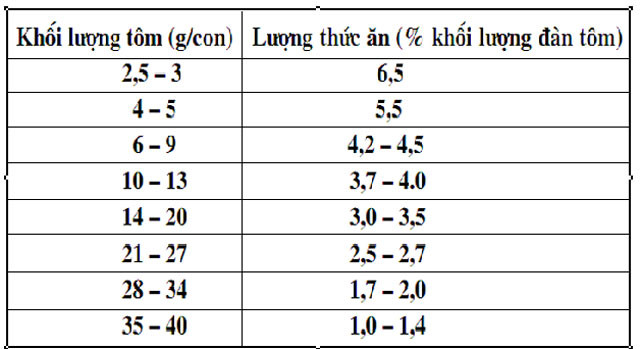How to feed giant freshwater prawns
Farmers must have a good grasp of the technical farming process, especially the technique of feeding shrimp and managing feed to achieve efficiency, because feed costs in shrimp farming account for more than 50% of the cost of the crop.
The nutritional characteristics of giant freshwater prawns are different from other aquatic species. When in the larval stage, giant freshwater prawns eat plankton and suspended matter. During this stage, farmers often feed shrimp Artemia larvae and processed food with small particle size (egg yolk, milk, squid oil, etc.). In the post-larval stage, giant freshwater prawns have many nutritional characteristics of adult shrimp. They catch prey at the bottom of ponds. This stage makes good use of processed food or fresh food provided by humans. The most suitable food for this stage is bloodworms, minced shrimp, minced fresh fish, snails, and minced mussels. Adult shrimp are omnivorous and live on the bottom. In nature, their food is usually mollusks (snails, mussels), other crustaceans, bloodworms, organic matter, etc. When mature, shrimp make good use of artificial food, especially pelleted food.
 |
| Feeding shrimp with enough nutrients and quantity helps them grow quickly - Photo: Tran Ut |
Shrimps search for food by using their tactile organs, using their thoracic legs to clamp food and bring it to their mouths. Shrimps also eat each other when there is a shortage of food in the pond, and some in the group molt. Shrimps eat heavily at night.
Fresh food (slaughterhouse waste, snails, crabs, coconut rice, potatoes) can be used for direct feeding; or processed food (rice husks, bran, fish meal, etc.) can be steamed, pressed into pellets, dried and stored for shrimp to eat; or industrial pellets, a food ration with a protein content of 25 - 30% is sufficient.
Feeding amount is calculated as follows: use industrial pellets
 |
The following factors should be used to adjust the appropriate amount of food:
+ Combine feeding screens and spread them in many places in the pond to easily check the food used by shrimp.
+ Dirty ponds or rainy and windy days should reduce the amount of food.
+ It is better to underfeed shrimp than overfeed (use a net to check the food daily).
+ Shrimp like fishy bait so need to mix processed food with fresh food to create smell
Note: Fresh food such as crabs, snails, and miscellaneous fish, after being crushed, should be put into a sieve, not spread all over the pond, to make it easier to check and remove leftover food, avoiding contaminating the pond water.
According to Thuysanvietnam
